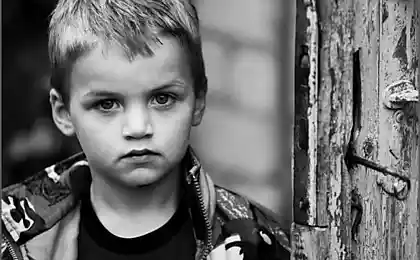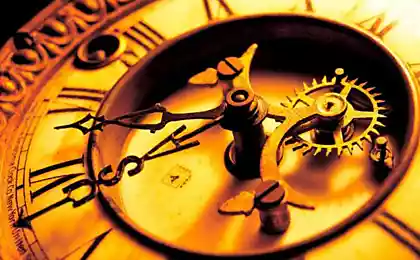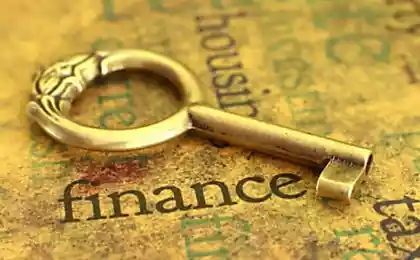280
The Magic of Habit Cycle: The Key to Success in Life and Sport

We live in a world where change is constant. The desire to introduce new healthy habits, whether it’s regular exercise, learning a foreign language, or just getting up early, is often broken down by routine and body resistance. It's familiar, isn't it? But there is a powerful tool that can dramatically change your approach to self-improvement and goal achievement – the habit cycle. This concept, backed up by neurobiological research, offers a step-by-step plan for forming sustainable habits, allowing you to survive transformations without undue stress and forget about breakdowns forever.
What is the Habit Cycle: The Neurobiology of Behavior
At the heart of any habit is the three-component cycle, first described in detail by Charles Duhigg in his best-selling book The Power of Habit. This cycle consists of three key elements:
- Signal (Cue): This is a trigger that triggers automatic behavior. The signal can be the time of day, location, previous action, emotional state, or even the company of certain people. The brain registers this signal and automatically goes into habit-execution mode.
- Action (Routine): It is the behavior itself, which can be physical, mental or emotional. For example, a morning jog, checking email, or biting your nails.
- Reward: This is the positive reinforcement that the brain receives after performing an action. The reward can be physical pleasure, emotional satisfaction, or simply a sense of accomplishment. It is the reward that cements the connection between signal and action, making the habit sustainable.
Neurobiological studies show that with each repetition of the habit cycle, the neural connections between signal, action and reward are strengthened. The brain creates a kind of “automatic loop” that allows you to perform habitual activities with almost no conscious effort, saving energy for more important tasks. Understanding this deep mechanics is the first step to consciously managing your habits.
Key Insight:
Habits are not formed by chance. Behind each automatic action is a clear neural sequence. By becoming aware of the elements of this sequence, we gain control over our behavioral patterns.
How to Use Habit Cycle for Life Achievement
Knowledge of the structure of the habit cycle opens up ample opportunities for the purposeful formation of the desired behavior. Here are some practical strategies:
1. Identifying Existing Habits: Auditing Your Behavior
Before introducing new habits, it’s important to recognize those that are already running your life. Notice what you do automatically throughout the day. What signals trigger these actions? What rewards do you receive as a result?
For example, you notice that every time you sit down at a desktop (signal), you first check social media (action), and this gives you a short-term sense of connection and entertainment (reward). Understanding this cycle is the first step to changing it if you find it unproductive.
2. Changing Unwanted Habits: Find a New Routine
The most effective strategy to combat a bad habit is not to suppress it (which requires great willpower), but to replace the action in the habit cycle. Save the signal and reward, but implement a new, more rewarding action.
Let’s go back to the example of social media. Instead of immediately opening your news feed (the old action), try after you have sat down at the table (the signal), open a list of tasks and plan your work for the next hour (the new action). The reward can be a sense of accomplishment and satisfaction from productive work.
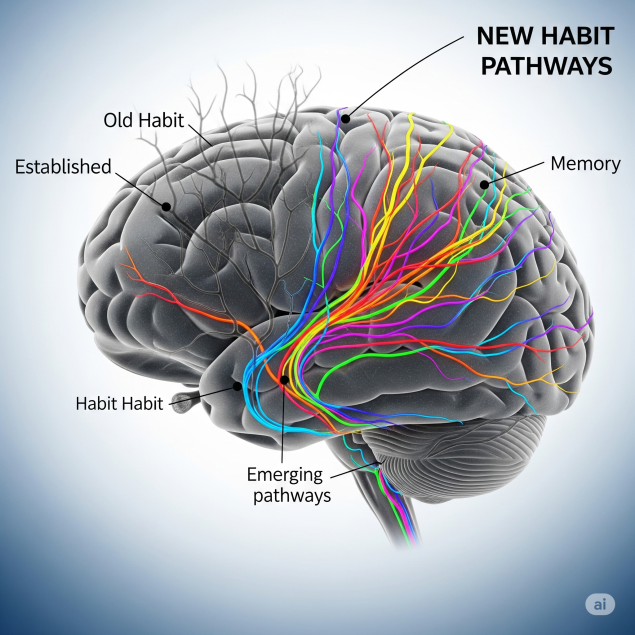
3. Forming New Good Habits: Clarity and Reinforcement
Creating a new habit requires conscious effort at each stage of the cycle.
- Identify a clear and specific signal: “Every morning after a cup of coffee.” The more specific the signal is, the easier it is for the brain to form an association.
- Make the action simple and doable: Start small. Instead of an hour of training, a 15-minute exercise. Instead of writing a chapter of a book, one paragraph.
- Reward yourself immediately: The reward should be meaningful and enjoyable for you. It could be something as simple as praise, a cup of your favorite tea after a workout, or a tick on your to-do list.
Example: Building a habit of readingSignal: Every night after dinner, when I sit on the couch.
Action: Read at least one page of the book.
Award: A feeling of relaxation and satisfaction from gaining new knowledge.
The Habit Cycle in Sport: The Path to Outstanding Results
The principles of the habit cycle play a key role in achieving sports goals. Professional athletes and coaches have long intuitively used these mechanisms to improve the effectiveness of training and competition.
1. Formation of training routine: Stability is the key to progress
Regular training is the basis of sports achievements. Creating a clear schedule (signal) and following it (action), despite fatigue or reluctance, forms a stable habit. The reward can be a feeling of physical vivacity, improving performance and approaching the goal.
2. Techniques: Small Steps to Mastery
The development of individual elements of the technique can be monotonous, but breaking a complex skill into smaller repetitive actions (cycles) and encouraging even minor improvements (rewards) allows you to gradually automate movements and achieve a high level of skill.
3. Managing Precompetitive Excitement: Rituals of Success
Many athletes have their own pre-competitive rituals (signals) that help them tune in to the performance (action) and feel confident and in control (reward). These rituals may include certain music, warm-ups, or mental attitudes.
It's important to remember:
Forming a stable habit takes time and consistency. Don’t worry about temporary failures. Analyze your habit cycle, make adjustments, and keep moving toward your goal.
Lifehacks for Successful Habit Cycle Implementation
- Start with one habit: Don’t try to change everything at once. Focus on one key habit.
- Be patient: Forming a new habit can take from a few weeks to several months.
- Track your progress: Keeping a habit diary will help you see your accomplishments and keep you motivated.
- Use the power of the environment: Create an environment around you that supports your new habits.
- Don't be afraid to experiment: If something doesn’t work, try changing the signal, action, or reward.
- Be kind to yourself: Breakdowns happen. It is important not to give up, but to analyze the cause and return to the intended path.
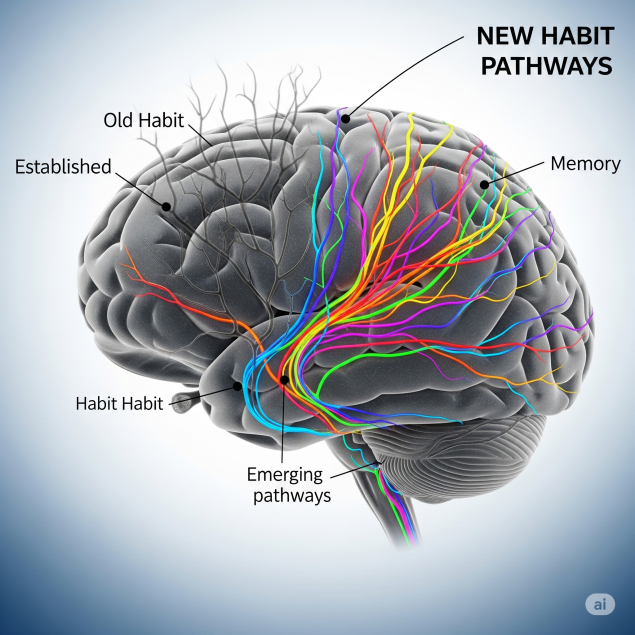
Conclusion: Make a Habit Cycle Your Ally
The habit cycle is not just a scientific concept, it is a powerful practical tool that can become your reliable ally on the way to any goals, whether it is improving health, increasing productivity or achieving athletic excellence. By understanding how our automatic actions are formed, we are able to consciously design our lives, introducing the desired behavior and getting rid of what is holding us back. Start small, be persistent, and you’ll be surprised how smoothly and effectively the habit cycle will lead you to significant change and long-awaited achievement.
Glossary
A neurobiological loop consisting of three elements: signal, action and reward, which underlies the formation of any automatic behavior.
A signal (Cue) is a trigger that triggers the execution of a habitual action. It can be a time, place, previous action, emotional state, or environment.
Routine: The behavior itself, physical, mental, or emotional, that is performed in response to a signal.
Reward: The positive reinforcement that the brain receives after performing an action, which helps to consolidate the habit.
Neural connections – Connections between nerve cells (neurons) in the brain. Repetitive actions strengthen these bonds, making the execution of habits more automatic.
Automation is the ability to perform actions without conscious control or significant mental effort, characteristic of formed habits.
Reinforcement: A process that increases the likelihood of a certain behavior repeating itself. In the context of the habit cycle, the reward acts as reinforcement.
9 Strategies to Stay Calm in Conflict at Work
Each person belongs to one of the following types: 0.8, 1.0 or 1.2.





